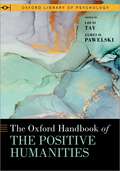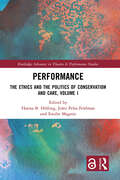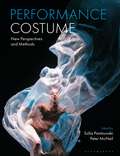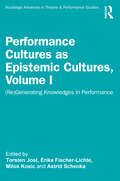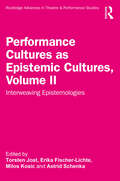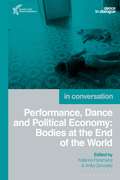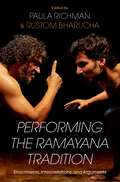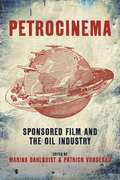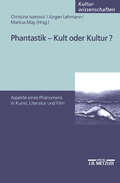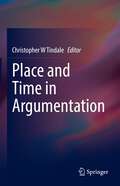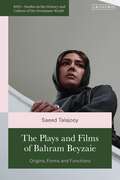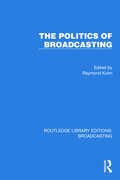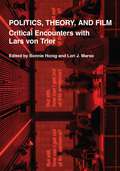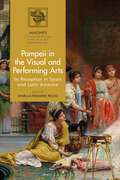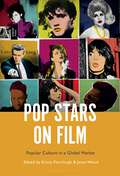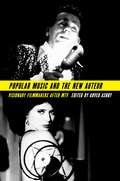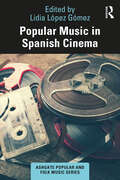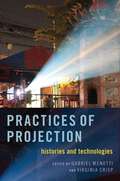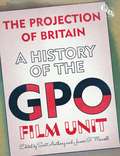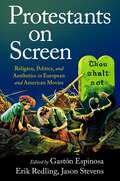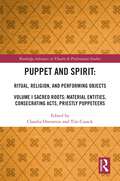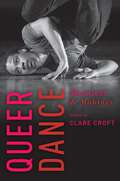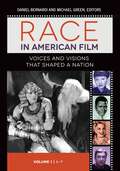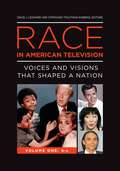- Table View
- List View
The Oxford Handbook of the Positive Humanities (Oxford Library of Psychology)
This handbook examines the new and rapidly growing field of the positive humanities--an area of academic research at the intersection of positive psychology and the arts and humanities. Written by leading experts across a wide range of academic disciplines, the volume begins with an overview of the science and culture of human flourishing, covering historical and current trends in this literature. Next, contributors consider the well-being benefits of engagement with the arts and humanities, marking out neurological, cognitive, emotional, behavioral, and social pathways to human flourishing. These pathways lead to detailed investigations of individual fields within the arts and humanities, including music, the visual arts, philosophy, history, literature, religion, theater, and film. Along the way, the book thoroughly synthesizes theory, research, and exemplary practice, concluding with thought-provoking discussions of avenues for public engagement and policy. With its expansive coverage of both the field as a whole and specialized disciplinary and interdisciplinary drivers, The Oxford Handbook of the Positive Humanities advances the literature on the theory and science of well-being and extends the scope of the arts and humanities.
Performance: The Ethics and the Politics of Conservation and Care, Volume I (Routledge Advances in Theatre & Performance Studies)
This book focuses on performance and performance-based artworks as seenthrough the lens of conservation, which has long been overlooked in the largertheoretical debates about whether and how performance remains. Unraveling the complexities involved in the conservation of performance,Performance: The Ethics and the Politics of Conservation and Care (vol. 1)brings this new understanding to bear in examining performance as an object ofstudy, experience, acquisition, and care. In so doing, it presents both theoreticalframeworks and functional paradigms for thinking about—and enacting—theconservation of performance. Further, while the conservation of performance isundertheorized, performance is nevertheless increasingly entering the artmarket and the museum, meaning that there is an urgent need for discourse onhow to care for these works long-term. In recent years, a few pioneering conservators,curators, and scholars have begun to create frameworks for the longtermcare of performance. This volume presents, explicates, and contextualizestheir work so that a larger discourse can commence. It will thus serve the needsof conservation students and professors, for whom literature on this subject issorely needed. This interdisciplinary book thus implements a novel rethinking of performancethat will challenge and revitalize its conception in many fields, such as art history,theater, performance studies, heritage studies, and anthropology.
Performance Costume: New Perspectives and Methods
Costume is an active agent for performance-making; it is a material object that embodies ideas shaped through collaborative creative work. A new focus in recent years on research in the area of costume has connected this practice in vital and new ways with theories of the body and embodiment, design practices, artistic and other forms of collaboration. Costume, like fashion and dress, is now viewed as an area of dynamic social significance and not simply as passive reflector of a pre-conceived social state or practice. This book offers new approaches to the study of costume, as well as fresh insights into the better-understood frames of historical, theoretical, practice-based and archival research into costume for performance.This anthology draws on the experience of a global group of established researchers as well as emerging voices. Below is a list of just some of the things it achieves:1. Introduces diverse perspectives, innovative new research methods and approaches for researching design and the costumed body in performance.2. Contributes towards a new understanding of how costume actually 'performs' in time and space.3. Offers new insights into existing practices, as well as creating a space of connection between practitioners and researchers from design, the humanities and social sciences.
Performance Cultures as Epistemic Cultures, Volume I: (Re)Generating Knowledges in Performance (Routledge Advances in Theatre & Performance Studies)
This volume investigates performances as situated "machineries of knowing" (Karin Knorr Cetina), exploring them as relational processes for, in and with which performers as well as spectators actively (re)generate diverse practices of knowing, knowledges and epistemologies. Performance cultures are distinct but interconnected environments of knowledge practice. Their characteristic features depend not least on historical as well as contemporary practices and processes of interweaving performance cultures. The book presents case studies from diverse locations around the globe, including Argentina, Canada, China, Greece, India, Poland, Singapore, and the United States. Authored by leading scholars in theater, performance and dance studies, its chapters probe not only what kinds of knowledges are (re)generated in performances, for example cultural, social, aesthetic and/or spiritual knowledges; the contributions investigate also how performers and spectators practice knowing (and not-knowing) in performances, paying particular attention to practices and processes of interweaving performance cultures and the ways in which they contribute to shaping performances as dynamic "machineries of knowing" today. Ideal for researchers, students and practitioners of theater, performance and dance, (Re)Generating Knowledges in Performance explores vital knowledge-serving functions of performance, investigating and emphasizing in particular the impact and potential of practices and processes of interweaving of performance cultures that enable performers and spectators to (re)generate crucial knowledges in increasingly diverse ways.
Performance Cultures as Epistemic Cultures, Volume II: Interweaving Epistemologies (Routledge Advances in Theatre & Performance Studies)
This volume investigates performance cultures as rich and dynamic environments of knowledge practice through which distinctive epistemologies are continuously (re)generated, cultivated and celebrated. Epistemologies are dynamic formations of rules, tools and procedures not only for understanding but also for doing knowledges. This volume deals in particular with epistemological challenges posed by practices and processes of interweaving performance cultures. These challenges arise in artistic and academic contexts because of hierarchies between epistemologies. European colonialism worked determinedly, violently and often with devastating effects on instituting and sustaining a hegemony of modern Euro-American rules of knowing in many parts of the world. Therefore, Interweaving Epistemologies critically interrogates the (im)possibilities of interweaving epistemologies in artistic and academic contexts today. Writing from diverse geographical locations and knowledge cultures, the book’s contributors—philosophers and political scientists as well as practitioners and scholars of theater, performance and dance—investigate prevailing forms of epistemic ignorance and violence. They introduce key concepts and theories that enable critique of unequal power relations between epistemologies. Moreover, contributions explore historical cases of interweaving epistemologies and examine innovative present-day methods of working across and through epistemological divides in nonhegemonic, sustainable, creative and critical ways. Ideal for practitioners, students and researchers of theater, performance and dance, Interweaving Epistemologies emphasizes the urgent need to acknowledge, study and promote epistemological plurality and diversity in practices of performance-making as well as in scholarship on theater and performance around the globe today.
Performance, Dance and Political Economy: Bodies at the End of the World (Dance in Dialogue)
This book examines the relation between bodies and political economies at micro and macro levels. It stands in the space between ends and beginnings – some long-desired, such as the end of capitalism and racism, and others long-dreaded, such as the climate catastrophe – and reimagines what the world can be like instead. It offers an original investigation into the relation between performance, dance, and political economy, looking at the points where politics, economics, ethics, and culture intersect. Arising from live conversations and exchanges among the contributors, this book is written in an interdisciplinary and dialogical manner by leading scholars and artists in the fields of Performance Studies, Dance, Political Theory, Economics, and Social Theory: Marc Arthur, Melissa Blanco Borelli, Anita Gonzalez, Alexandrina Hemsley, Jamila Johnson-Small, Elena Loizidou, Tavia Nyong'o, Katerina Paramana, Nina Power, and Usva Seregina. Their critical and creative examinations of the relation between bodies and political economy offer insights for both imagining and materializing a world beyond the present.
Performing the Ramayana Tradition: Enactments, Interpretations, and Arguments
The Ramayana, one of the two pre-eminent Hindu epics, has played a foundational role in many aspects of India's arts and social norms. For centuries, people learned this narrative by watching, listening, and participating in enactments of it. Although the Ramayana's first extant telling in Sanskrit dates back to ancient times, the story has continued to be retold and rethought through the centuries in many of India's regional languages, such as Hindi, Tamil, and Bengali. The narrative has provided the basis for enactments of its episodes in recitation, musical renditions, dance, and avant-garde performances. This volume introduces non-specialists to the Ramayana's major themes and complexities, as well as to the highly nuanced terms in Indian languages used to represent theater and performance. Two introductions orient readers to the history of Ramayana texts by Tulsidas, Valmiki, Kamban, Sankaradeva, and others, as well as to the dramaturgy and aesthetics of their enactments. The contributed essays provide context-specific analyses of diverse Ramayana performance traditions and the narratives from which they draw. The essays are clustered around the shared themes of the politics of caste and gender; the representation of the anti-hero; contemporary re-interpretations of traditional narratives; and the presence of Ramayana discourse in daily life.
Petrocinema: Sponsored Film and the Oil Industry
Petrocinema presents a collection of essays concerning the close relationship between the oil industry and modern media-especially film. Since the early 1920s, oil extracting companies such as Standard Oil, Royal Dutch/Shell, ConocoPhillips, or Statoil have been producing and circulating moving images for various purposes including research and training, safety, process observation, or promotion. Such industrial and sponsored films include documentaries, educationals, and commercials that formed part of a larger cultural project to transform the image of oil exploitation, creating media interfaces that would allow corporations to coordinate their goals with broader cultural and societal concerns. Falling outside of the domain of conventional cinema, such films firmly belong to an emerging canon of sponsored and educational film and media that has developed over the past decade. Contributing to this burgeoning field of sponsored and educational film scholarship, chapters in this book bear on the intersecting cultural histories of oil extraction and media history by looking closely at moving image imaginaries of the oil industry, from the earliest origins or “spills” in the 20th century to today's post industrial “petromelancholia.”
Phantastik - Kult oder Kultur?: Aspekte eines Phänomens in Kunst, Literatur und Film
Als ein Indikator sich anbahnender epochaler Wandlungen dominiert Phantastik viele Bereiche der Kultur, insbesondere der Alltagskultur. Wird in der Phantastik das Inventar der abendländischen Kultur zugleich bewahrt wie in Frage gestellt, so ist es Aufgabe einer gegenwartsbezogenen Phantastikforschung, dies aufzuzeigen und dabei zugleich die spezifischen Transformationsverfahren der Phantastik herauszuarbeiten. Der Band ist hervorgegangen aus einem anlässlich der Ausstellung »Phantastik am Ende der Zeit« (2000) durchgeführten Kongress in Erlangen. Er versammelt die Beiträge von Vertretern mehrerer kulturwissenschaftlicher Disziplinen, die sich unterschiedlichen Aspekten der Phantastik in der bildenden Kunst, im Film und in der Literatur widmen.
Place and Time in Argumentation
This book introduces the principles of place and time by discussing the main roles they play in argumentation, unpacking the multifarious meanings of spatiality and temporality. Definitions of kairos are explored to yield suggestions as to how this concept, and that of ‘place’, can operate in argumentation. The chapters explore various related concepts such as the role of different arguments in different places, and how some places are not intended for argument; argumentation, time and temporality; visual argumentation; the effect of the passage of time on argument evaluation; and the image as a site of discursive production. This collection is of interest to students and researchers in argumentation studies, rhetoric, reasoning, and philosophy.Previously published in Argumentation Volume 34, issue 1, March 2020
The Plays and Films of Bahram Beyzaie: Origins, Forms and Functions (British Institute of Persian Studies)
Bahram Beyzaie is one of Iran's leading playwrights and auteur filmmakers. This book examines several of Beyzaie's films and plays and their preoccupation with the modalities and transformations of Iranian contemporary, historical and mythical identity from different perspectives. The chapters analyse Beyzaie's influential plays such as Arash and So Dies Pahlevan Akbar and his filmic magnum opuses such as The Crow, Bashu, the Little Stranger and Killing Mad Dogs from a range of critical perspectives including ecofeminist, sociopolitical, new-historicist, archetypal and psychoanalytical readings. They also explore Beyzaie's dialogue with filmic genres such as noir, different Iranian languages such as Gilaki, Iranian epics and ritual practices such as ta'ziyeh plays and javanmardi chivalry cults. Together, the chapters show how Beyzaie's works negotiate narratives of belonging and undermine the dominant exclusionist discourses in Iran, and how they use the resources of Iranian folk and performance traditions to comment on the position of women, children, intellectuals, and minorities in society.
The Politics of Broadcasting (Routledge Library Editions: Broadcasting #28)
The Politics of Broadcasting (1985) examines the state of broadcasting in a variety of Western democracies from a political viewpoint, written at a time when new telecommunications and information technology revolutionised television and radio. The book describes and analyses the problems faced by politicians and broadcasters in responding to these changing technological and political environments.
Politics, Theory, and Film: Critical Encounters with Lars von Trier
Lars von Trier's intense, disturbing, and sometimes funny films have led many to condemn him as misogynist or misanthropic. The same films inspire this collection's reflections on how our fears and desires regarding gender, power, race, finitude, family, and fate often thwart -- and sometimes feed -- our best democratic aspirations. The essays in this volume attend to von Trier's role as provocateur, as well as to his films' techniques, topics, and storytelling. Where others accuse von Trier of being clichéd, the editors argue that he intensifies the "clichés of our times" in ways that direct our political energies towards apprehending and repairing a shattered world. The book is certainly for von Trier lovers and haters but, at the same time, political, critical, and feminist theorists entirely unfamiliar with von Trier's films will find this volume's essays of interest. Most of the contributors tarry with von Trier to develop new readings of major thinkers and writers, including Agamben, Bataille, Beauvoir, Benjamin, Deleuze, Euripides, Freud, Kierkegaard, Ranciére, Nietzsche, Winnicott, and many more. Von Trier is both central and irrelevant to much of this work. Writing from the fields of classics, literature, gender studies, philosophy, film and political theory, the authors stage an interdisciplinary intervention in film studies.
Pompeii in the Visual and Performing Arts: Its Reception in Spain and Latin America (IMAGINES – Classical Receptions in the Visual and Performing Arts)
This volume examines the influence that Pompeii and, to a lesser extent, Herculaneum had on the visual and performing arts in Spain and countries across South America. Covering topics from architecture, painting and decorative arts to theatre, dance and photography, the reader will gain insight into the reception of classical antiquity through the analysis of the close cultural ties between both sides of the Atlantic, in the past and the present. Each contribution has been written by a specialist researcher participating in the project, 'The Reception and Influence of Pompeii and Herculaneum in Spain and Ibero-America', funded by the Spanish Ministry of Science and Innovation (PGC2018-093509-B-I00 Ministry of Science and Innovation/AEI/ERDF/EU).Pompeii in the Visual and Performing Arts begins by examining the influence of Pompeiian architecture in Spain in paintings that depict scenes inspired by Roman scenes and also buildings modelled on those of Pompeii. Next, the influence of Pompeii crosses the Atlantic to Mexico with a study of the archaeological site's influence on the visual and performing arts. An exploration of the elitist use of the ancient past in architecture is seen in Chilean architecture, which leads onto an investigation of the new art styles that emerged in the 19th century. Later chapters look into the influence of the ancient frescoes and the use of modern plaster casts of statues. The final chapters are devoted to comics and photography, which also make a study of the places in Latin America nicknamed 'Pompeii' in the 20th and 21st centuries.
Pop Stars on Film: Popular Culture in a Global Market
Pop stars have provided audiences with performative moments that have become ingrained in popular consciousness. They are a lens through which deeper understandings about race, gender, politics, history and the artistic process can be understood. When combined with the most affective of mediums – cinema, the combination can be both thrilling and alarming.From the relatively early days of cinema, figures from the world of popular music have made forays into acting and contributed cameo appearances. From Little Richard and Kylie Minogue to Nick Cave and Tom Waits, Pop Stars On Film: Popular Culture in a Global Market offers a collection of essays on some of the most influential international performances from a diverse range of cultural icons. The book considers industry shifts, access and diversity, but also the notion of cultural appropriation, audience appeal, marketing and demographics. Perhaps most importantly, the publication will look at what happens when cultures collide and coalesce.
Popular Music and the New Auteur: Visionary Filmmakers after MTV
MTV utterly changed the movies. Since music television arrived some 30 years ago, music videos have introduced filmmakers to a new creative vocabulary: speeds of events changed, and performance and mood came to dominate over traditional narrative storytelling. Popular Music and the New Auteur charts the impact of music videos on seven visionary directors: Martin Scorsese, Sofia Coppola, David Lynch, Wong Kar-Wai, the Coen brothers, Quentin Tarantino, and Wes Anderson. These filmmakers demonstrate a fresh kind of cinematic musicality by writing against pop songs rather than against script, and allowing popular music a determining role in narrative, imagery, and style. Featuring important new theoretical work by some of the most provocative writers in the area today, Popular Music and the New Auteur will be required reading for all who study film music and sound. It will be particularly relevant for readers in popular music studies, and its intervention in the ongoing debate on auteurism will make it necessary reading in film studies.
Popular Music in Spanish Cinema (Ashgate Popular and Folk Music Series)
Popular Music in Spanish Cinema analyses the aesthetics and stylistic development of soundtracks from national productions, considering how political instability and cultural diversity in Spain determined the ways of making art and managing culture. As a pioneering study in this field, the chronologically structured approach of this book provides readers with a complete overview of Spanish music and connects it to the complex historical events that conditioned Spanish culture throughout the 20th century to the present day, from the Second Republic, the Spanish Civil war, and the dictatorship through to democracy. The book enables an understanding of the relationships between the recording and film production industries, the construction of collective imagination, the formulation of new stereotypes, semiotic meanings within film music and the musical exchanges between national and international cinema. This volume is an essential read for students and academics in the field of musicology, ethnomusicology and history as well as those interested in the study of diverse musical styles such as copla, zarzuela, flamenco, jazz, foxtrot, pop and rock and how they have been used in Spanish films throughout history.
Practices of Projection: Histories and Technologies
To many, the technological aspects of projection often go unnoticed, only brought to attention during moments of crisis or malfunction. For example, when a movie theater projector falters, the audience suddenly looks toward the back of the theater to see a sign of mechanical failure. The history of cinema similarly shows that the attention to projection has been most focused when the whole medium is hanging in suspension. During Hollywood's economic consolidation in the '30s, projection defined the ways that sync-sound technologies could be deployed within the medium. Most recently, the digitization of cinema repeated this process as technology was reworked to facilitate mobility. These examples show how projection continually speaks to the rearrangement of media technology. Projection therefore needs to be examined as a pivotal element in the future of visual media's technological transition. In Practices of Projection: Histories and Technologies, volume editors Gabriel Menotti and Virginia Crisp address the cultural and technological significance of projection. Throughout the volume, chapters reiterate that projection cannot, and must not, be reduced to its cinematic functions alone. Borrowing media theorist Siegfried Zielinksi's definition, Menotti and Crisp refer to projection as the "heterogeneous array of artefacts, technical systems, and particularly visual praxes of experimentation and of culture." From this, readers can understand the performative character of the moving image and the labor of the different actors involved in the utterance of the film text. Projection is not the same everywhere, nor equal all the time. Its systems are in permanent interaction with environmental circumstances, neighboring structures, local cultures, and social economies. Thus the idea of projection as a universal, fully autonomous operation cannot hold. Each occurrence of projection adds nuance to a wider understanding of film screening technologies.
The Projection of Britain: A History of the GPO Film Unit
The General Post Office (GPO) Film Unit sat at the creative epicentre of Britain in the 1930s. It nurtured a vital crop of artistic talent, built a forum for a new kind of cinematic address and created Britain's first self-consciously national cinema. In 2011, UNESCO added its work to the UK Memory of the World Register, recognising its status as part of Britain's cultural heritage. Elements of the GPO Film Unit's story are well known: John Grierson's development of documentary cinema; the influence of Mass Observation and Surrealism on its cinematic vision; the Watt–Auden–Britten collaboration Night Mail. The Projection of Britain: A History of the GPO Film Unit brings together primary materials and critical appraisals to revisit, re-contextualise and revitalise these seminal moments in British cinema. Here, the insights of an archivist, a musicologist, a design historian, a sports historian, a geographer and a postman – among others – have been edited into a rich critical archaeology of a compelling moment in cinematic history. Interspersed with these essays are primary materials – memoirs, magazine articles, posters and government documents – that detail everything from Alberto Cavalcanti's vision for the documentary movement to a claim for the clothes Humphrey Jennings lost while shooting on location. In recent years there has been a resurgence of interest in the GPO Film Unit and its work, on the big screen, in DVD boxsets and on the web. The Projection of Britain ties together the Unit's diverse artistic, historical and cultural threads into an essential one-stop resource. Provocative, imaginative and ambitious, this expansive study is the definitive companion to an extraordinary episode in cinematic history.
Protestants on Screen: Religion, Politics and Aesthetics in European and American Movies
Protestants on Screen explores the Protestant contributions to American and European film from the silent era to the present day. The authors analyze how Protestant filmmakers, beliefs, theology, symbols, sensibilities, and cultural patterns have shaped the history of film. Challenging the stereotype of Protestants as world-denouncing-and-defying puritans and iconoclasts who stood in the way of film's maturation as an art, the authors contend that Protestants were among the key catalysts in the origins and development of film, bringing an identifiably Protestant aesthetic to the medium. The essays in this volume track key Protestant themes like faith and doubt, sin and depravity, biblical literalism, personal conversion and personal redemption, holiness and sanctification, moralism and pietism, Providence and secularism, apocalypticism, righteousness and justice, religion and race, the priesthood of all believers and its offshoots-democratization and individualism. Protestants, the essays in this volume demonstrate, helped birth and shape the film industry and harness the power of motion pictures for spiritual instruction, edification, and cultural influence.
Puppet and Spirit: Volume I Sacred Roots: Material Entities, Consecrating Acts, Priestly Puppeteers (Routledge Advances in Theatre & Performance Studies)
This anthology of essays aims to explore the many types of relationships that exist between puppets, broadly speaking, and the immaterial world. The allure of the puppet goes beyond its material presence as, historically and throughout the globe, many uses of puppets and related objects have expressed and capitalized on their posited connections to other realms or ability to serve as vessels or conduits for immaterial presence. The flip side of the puppet’s troubling uncanniness is precisely the possibilities it represents for connecting to discarnate realities. Where do we see such connections? How do we describe, analyze, and theorize these relationships? The first of two volumes, this book focuses on these questions in relation to long-established, traditional practices using puppets, devotional objects, and related items with sacred aspects to them or that perform ritual roles. Looking at performance traditions and artifacts from China, Indonesia, Korea, Mali, Brazil, Iran, Germany, and elsewhere, the essays from scholars and practitioners provide a range of useful models and critical vocabularies for addressing the ritual and spiritual aspects of puppet performance, further expanding the growing understanding and appreciation of puppetry generally. This book, along with its companion volume, offers, for the first time, robust coverage of this subject from a diversity of voices, examples, and perspectives.
Quebec Cinema in the 21st Century: Transcending the National (Contemporary French and Francophone Cultures #95)
This collection of ten chapters and three original interviews with Québécois filmmakers focuses on the past two decades of Quebec cinema and takes an in-depth look at a (primarily) Montreal-based filmmaking industry whose increasingly diverse productions continue to resist the hegemony of Hollywood and to exist as a visible and successful hub of French-language – and ever more multilingual – cinema in North America. This volume picks up where Bill Marshall’s 2001 Quebec National Cinema ends to investigate the inherently global nature of Quebec’s film industry and cinematic output since the beginning of the new millennium. Through their analyses of contemporary films (Une colonie, Avant les rues, Bon cop, bad cop, Les Affamés, Tom à la ferme, Uvanga, among others), directors (including Xavier Dolan, Denis Côté, Sophie Desrape, Chloé Robichaud, Jean-Marc Vallée, and Monia Chokri) and genres (such as the buddy comedy and the zombie film), our authors examine the growing tension between Quebec cinema as a “national cinema” and as an art form that reflects the transnationalism of today’s world, a new form of fluidity of individual experiences, and an increasing on-screen presence of Indigenous subjects, both within and outside the borders of the province. The book concludes with specially conducted interviews with filmmakers Denis Chouinard, Bachir Bensadekk, and Marie-Hélène Cousineau, who provide their views and insights on contemporary Quebec filmmaking.
Queer Dance
If we imagine multiple ways of being together, how might that shift choreographic practices and help us imagine ways groups assemble in more varied ways than just pairing another man with another woman? How might dancing queerly ask us to imagine futures through something other than heterosexuality and reproduction? How does challenging gender binaries always mean thinking about race, thinking about the postcolonial, about ableism? What are the arbitrary rules structuring dance in all its arenas, whether concert and social or commercial and competition, and how do we see those invisible structures and work to disrupt them? Queer Dance brings together artists and scholars in a multi-platformed project-book, accompanying website, and live performance series to ask, "How does dancing queerly progressively challenge us?" The artists and scholars whose writing appears in the book and whose performances and filmed interviews appear online stage a range of genders and sexualities that challenge and destabilize social norms. Engaging with dance making, dance scholarship, queer studies, and other fields, Queer Dance asks how identities, communities, and artmaking and scholarly practices might consider what queer work the body does and can do. There is great power in claiming queerness in the press of bodies touching or in the exceeding of the body best measured in sweat and exhaustion. How does queerness exist in the realm of affect and touch, and what then might we explore about queerness through these pleasurable and complex bodily ways of knowing?
Race in American Film [3 volumes]: Voices and Visions That Shaped a Nation [3 volumes]
This expansive three-volume set investigates racial representation in film, providing an authoritative cross-section of the most racially significant films, actors, directors, and movements in American cinematic history.Hollywood has always reflected current American cultural norms and ideas. As such, film provides a window into attitudes about race and ethnicity over the last century. This comprehensive set provides information on hundreds of films chosen based on scholarly consensus of their importance regarding the subject, examining aspects of race and ethnicity in American film through the historical context, themes, and people involved.This three-volume set highlights the most important films and artists of the era, identifying films, actors, or characterizations that were considered racist, were tremendously popular or hugely influential, attempted to be progressive, or some combination thereof. Readers will not only learn basic information about each subject but also be able to contextualize it culturally, historically, and in terms of its reception to understand what average moviegoers thought about the subject at the time of its popularity—and grasp how the subject is perceived now through the lens of history.
Race in American Television [2 volumes]: Voices and Visions That Shaped a Nation [2 volumes]
This two-volume encyclopedia explores representations of people of color in American television. It includes overview essays on early, classic, and contemporary television and the challenges for, developments related to, and participation of minorities on and behind the screen.Covering five decades, this encyclopedia highlights how race has shaped television and how television has shaped society. Offering critical analysis of moments and themes throughout television history, Race in American Television shines a spotlight on key artists of color, prominent shows, and the debates that have defined television since the civil rights movement. This book also examines the ways in which television has been a site for both reproduction of stereotypes and resistance to them, providing a basis for discussion about racial issues in the United States.This set provides a significant resource for students and fans of television alike, not only educating but also empowering readers with the necessary tools to consume and watch the small screen and explore its impact on the evolution of racial and ethnic stereotypes in U.S. culture and beyond. Understanding the history of American television contributes to deeper knowledge and potentially helps us to better apprehend the plethora of diverse shows and programs on Netflix, Hulu, YouTube, and other platforms today.
